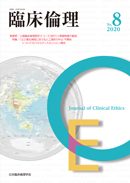Volume 8
Displaying 1-4 of 4 articles from this issue
- |<
- <
- 1
- >
- >|
Original articles
-
2020 Volume 8 Pages 5-16
Published: 2020
Released on J-STAGE: June 29, 2021
Download PDF (432K) -
2020 Volume 8 Pages 17-25
Published: 2020
Released on J-STAGE: June 29, 2021
Download PDF (351K)
Case study
-
2020 Volume 8 Pages 26-30
Published: 2020
Released on J-STAGE: June 29, 2021
Download PDF (290K)
Document articles
-
2020 Volume 8 Pages 31-41
Published: 2020
Released on J-STAGE: June 29, 2021
Download PDF (518K)
- |<
- <
- 1
- >
- >|
